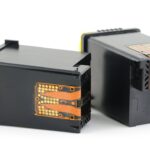Troubleshooting Common HP Printer Connectivity Problems
If your HP printer isn’t connecting to your computer or network, it can be frustrating. Whether it’s a Wi-Fi issue, USB connectivity problem, or something else, there are several common causes of connectivity problems. Fortunately, most of these issues can be resolved with a few simple steps. In this guide, we’ll walk you through troubleshooting some of the most frequent connectivity problems with HP printers and provide solutions to help you get back to printing.
1. Check Your Printer’s Power and Status
Before diving into more complicated troubleshooting steps, it’s essential to make sure your HP printer is powered on and in a ready state.
Steps to check:
- Ensure the printer’s power button is lit and that there are no error messages displayed on the screen (if your model has one).
- If your printer is off, turn it on and wait for it to initialize before attempting to connect again.
- If there’s an error message, follow the on-screen instructions or consult the printer manual to resolve the issue.
2. Ensure Wi-Fi or USB Connection Is Active
The next step is to confirm that the printer is properly connected to either your Wi-Fi network or USB port.
Wi-Fi Connectivity:
- Check that the printer is connected to the correct Wi-Fi network. Sometimes, printers can accidentally connect to the wrong network.
- Print a Network Configuration Page from the printer’s control panel to confirm the connection. On most HP printers, you can access this by going to Settings > Network Setup > Print Network Configuration Page.
- If the printer is not connected to the Wi-Fi network, go to the Wi-Fi settings on your printer and reconnect it to the correct network.
USB Connectivity:
- If you are using a USB cable to connect your printer, check that the cable is securely plugged into both the printer and the computer.
- Try using a different USB port or a different USB cable to rule out any port or cable issues.
- Ensure that the printer drivers are installed correctly on your computer, as outdated or corrupted drivers can prevent proper connection.
3. Restart Your Printer, Router, and Computer
Sometimes, restarting your devices can resolve connectivity issues by resetting network connections and clearing temporary problems.
Steps to restart:
- Turn off the printer, wait for 10-15 seconds, and then turn it back on.
- Restart your router to refresh the network connection.
- Reboot your computer to ensure that it is not facing any issues with the connection or printer settings.

4. Check Printer’s Network Settings (For Wireless Printers)
If you are using a wireless connection, the printer’s network settings might need to be checked or reconfigured.
Steps to check network settings:
- On the printer’s control panel, go to Settings > Network and ensure the Wi-Fi connection is enabled.
- Verify that the SSID (network name) matches your home or office network.
- If needed, run the HP Print and Scan Doctor tool, which can automatically detect network issues and offer solutions.
5. Update Printer Firmware and Software
Outdated firmware or software can often cause connectivity issues, especially with wireless connections. It’s essential to keep your printer drivers and firmware up to date.
How to update:
- Visit the HP Support website and check for the latest firmware updates for your printer model.
- You can also use the HP Smart app or the HP Printer Assistant software on your computer to check for and install updates automatically.
6. Fix IP Address Conflicts (For Wireless Printers)
Sometimes, your printer might be assigned the wrong IP address by the router, causing connection issues. This is particularly common in networks with many devices.
Steps to fix IP address conflicts:
- Check the printer’s IP address from the Network Configuration Page.
- Log in to your router’s settings page (usually accessed by typing your router’s IP address into a web browser).
- Assign a static IP address to your printer to ensure it doesn’t change or conflict with other devices on the network.
- Alternatively, enable DHCP (Dynamic Host Configuration Protocol) on your printer to automatically obtain a new IP address.
7. Reinstall or Update Printer Drivers
If the printer isn’t connecting to your computer, it might be due to issues with the printer drivers.
Steps to reinstall or update drivers:
- Go to the Device Manager on your computer and find your printer in the list of devices.
- Right-click on the printer and select Uninstall. After uninstalling, restart your computer.
- Visit the HP Support website and download the latest drivers for your printer model.
- Follow the installation instructions to reinstall the drivers and reconnect the printer.
8. Disable Firewall or Antivirus Software
In some cases, firewall or antivirus software on your computer can block the printer’s connection.
Steps to disable firewall/antivirus:
- Temporarily disable any firewall or antivirus software on your computer and check if the printer can connect.
- If disabling the firewall works, check your firewall settings and make sure the printer’s communication ports are not being blocked.
9. Reset the Printer’s Network Settings
If none of the previous solutions work, you may need to reset your printer’s network settings to the default settings and set it up again.
How to reset network settings:
- On the printer’s control panel, navigate to Settings > Network Setup > Restore Network Defaults.
- Follow the prompts to reset the settings, and then reconnect the printer to your Wi-Fi network.
10. Use the HP Print and Scan Doctor
HP Print and Scan Doctor is a free tool designed by HP to automatically diagnose and fix common printing and connectivity issues.
How to use:
- Download and install the HP Print and Scan Doctor from the HP Support website.
- Run the tool and follow the on-screen instructions to identify and fix any connectivity issues with your HP printer.
Conclusion
HP printer connectivity issues are common, but most problems can be easily resolved with a few troubleshooting steps. By following the tips above, you can fix Wi-Fi connection issues, USB problems, and software conflicts. If you continue to experience connectivity problems, don’t hesitate to contact HP support for further assistance. With a little patience, you’ll have your HP printer up and running again in no time.



